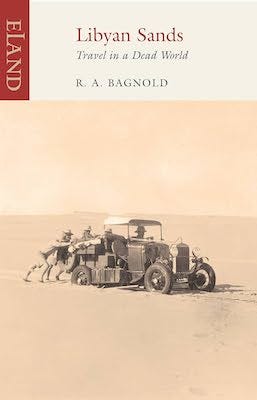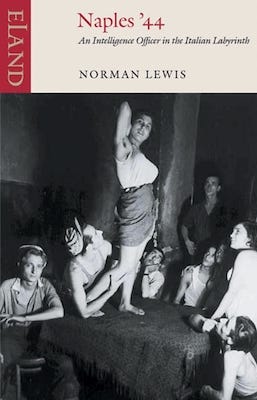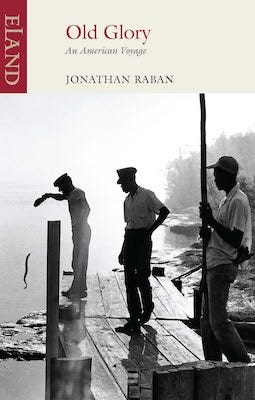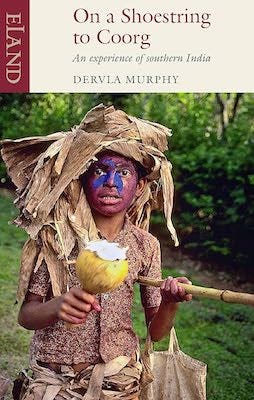Eland is a legend in the world of travel literature.
Founded in 1982 by John Hatt, this essential independent publishing house has been resurrecting lost travel classics and keeping them in print for more than 35 years.
Publisher Barnaby Rogerson summed up their approach for me over a sunny Monday morning breakfast at the Caravan cafe in London’s Exmouth Market. “Travel writing is always at its best when it is an individual’s passionate response to a society,” he said “It seldom, ever, aspires to a balanced point of view.”
“I’m looking for books where the traveler removes themselves from the narrative,” he said, “so the focus is on the people and the place. I think of it as anthropology-lite. It must be compulsively readable, witty, charming, and good company. But not a memoir, or a confessional […] We find that most great travel books are formed almost by accident, by some experience that has to be written down, rather than a hungry writer looking for stories.”
I’ve never read an Eland book that I didn’t enjoy. If I were a richer man, I would already own their entire library.
Looking for somewhere to start reading? This is my Eland Top 5:
Libyan Sands by Ralph Bagnold
My accidental introduction to the world of Eland, and a book I’ve reread four or five times.
Ralph Bagnold started exploring Egypt’s western desert in the 1920s and 30s while stationed in Cairo with the British military in the 1920’s and 30’s. It was there that he and a small group of friends first took Model ‘T’ Fords out into the sands — something everyone agreed was impossible given the difficulties of navigating vast dune seas. Over the course of their expeditions, they pioneered techniques that are used by desert drivers today, while opening previously unexplored territory and making the first recorded east-west crossing of the Libyan Desert in 1932.
Bagnold went on to form the Long Range Desert Group (LRDG) in the Second World War, carrying out small mobile hit and run attacks in the deepest parts of the Sahara using the skills he’d built on expedition. When the war ended he went into his lab and he wrote The Physics of Blown Sand, which is still the main reference in the field.
Bagnold wasn’t just a pioneer of desert driving techniques and a scientist. Libyan Sands, the book he wrote about his early driving expeditions, is a beautifully observed book filled with eloquent prose; a true classic of desert travel writing.
Naples ’44 by Norman Lewis
This is one of the greatest first hand accounts of the Second World War. Lewis came to Naples as an intelligence officer with the Allied invasion force. He wrote about conditions at the end of the conflict, the culture, and how people found ways to survive.
Lewis had an instinct for being in exactly the right place to capture traditional ways of life on the brink of modernity, but his books are far from dry — he also had an unerring eye for the absurd. He took pride in his ability to fade into even the most exotic background, and he wrote about cultures on the cusp of total and sometimes violent change.
Lewis's life was as fascinating as the worlds he brought to life in his books. Before he was able to live from his journalism and novels, he earned money as a wedding photographer, an umbrella wholesaler, a race car driver, and the founder of one of London’s first camera shops, which grew into a chain with outlets in several cities. He served in the intelligence corps in World War Two, and was sent on spying missions to Cuba by the creator of James Bond. He lived the sort of life that seems lost to us today.
Old Glory by Jonathan Raban
After a childhood of river dreams inspired by readings of Huckleberry Finn, Jonathan Raban set out to travel the length of the Mississippi River from north to south in a 16-foot open aluminum boat.
His journey took place in 1979. The waters he drifted down were much more dangerous than the river of his childhood imagination, but Huck’s urge to escape, to light out for the Territory before someone — some woman — civilizes him was very much the same.
Raban’s Mississippi is a turbulent world of fast eddies, mysterious boils, and tow boats with acres-long fleets of barges that looked like floating apartment blocks, and that pushed up massive wakes which sucked water from the shoreline and sent back towering waves that could capsize unwary boats.
Life beyond the muddy shoreline was another world entirely, with coon hunts, Baptist churches, pig roasts, failing towns, racial segregation, and disenfranchised people who felt left behind by their leaders and their nation. These are the characters he meets along the way as he observes the journey’s single rule: to follow the current of things.
Raban wrote about human landscapes rather than uninhabited ones, and the borderlands between what a place professes to be and what they are. An Englishman who emigrated to Seattle at the age of 47, his status as an outsider gave him a unique perspective on America as the land of perpetual self-reinvention.
Travels With Myself and Another by Martha Gellhorn
Travels with Myself and Another covers what Martha Gellhorn described as “five journeys through hell”: civil war China, the u-boat haunted Caribbean, West and East Africa, Soviet Moscow, and Israel. But this is not a gloomy book. It’s also very funny. Gellhorn knew that the worst experiences make the best travel stories, and she recognized the ridiculousness in disaster and discomfort even as she was embroiled in it.
My favourite story was her trip through East Africa, where she rents an elderly Land Rover from a white hunter. It sounded and handled like a tank, but the engine started and it moved. Less could be said of the driver: “Joshua arrived in black imitation Italian silk pipestem trousers, white shirt, black pointed shoes, black sunglasses in ornate red frames, holding a cardboard suitcase.” Not exactly standard safari ware. But her challenges were just beginning.
Gellhorn wanted to be known as a novelist. Instead, she’s remembered as one of the twentieth century’s greatest war correspondents. She wrote about what war does to ordinary people, and the despair of those who have lost everything. She covered the Spanish Civil War, and went ashore on the beaches of Normandy on D-Day. She also wrote about her travels in China, Africa and beyond with vividness and originality. She lived a truly remarkable life on her own terms, and she remains one of my favourite writers on place.
On a Shoestring to Coorg by Dervla Murphy
Dervla Murphy said the hill province of Coorg was the one place she could imagine herself living, apart from the small corner of Ireland she called home. Her wonderful account of southern India, and this small magical corner in particular, is probably my favourite Dervla book, alongside her autobiography Wheels Within Wheels. It may lack the hardcore adventure and physical privations of her early books, but it captures and innocence and curiosity that I find tremendously appealing.
Dervla has been described as a ‘travel legend’ and ‘the first lady of Irish cycling’. For five decades she travelled the world mostly alone, and mostly on foot. Her first book, Full Tilt: Ireland to India with a Bicycle, was published in 1965 and over 20 other titles followed on places as wide ranging as Peru, Pakistan, Afghanistan, Africa, India, Israel, Palestine, Laos, and Siberia. I prefer her early books to her later more political writing.
I’m also grateful to Eland for keeping Sybille Bedford’s books in print, and Nigel Barley’s Innocent Anthropologist trilogy, and Guy Kennaway’s One People.
These Eland books are my perennial favourites — and it wasn’t easy to narrow it down. I briefly considered expanding my list, but I know it would quickly get out of control.







